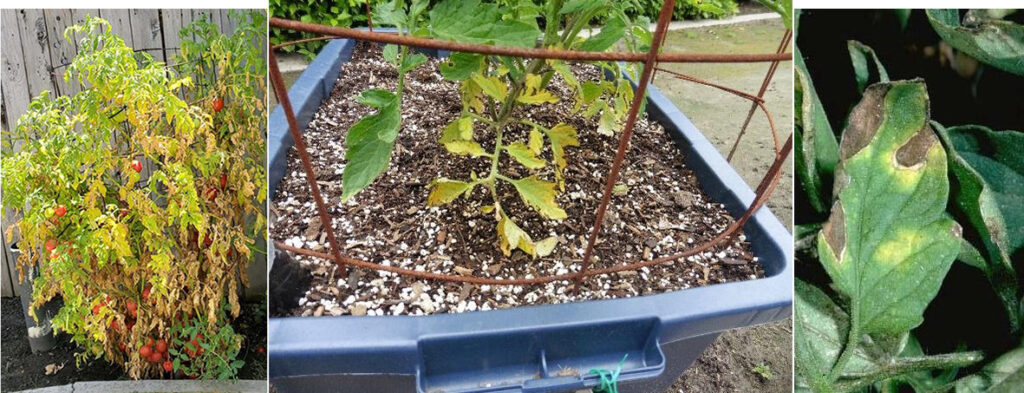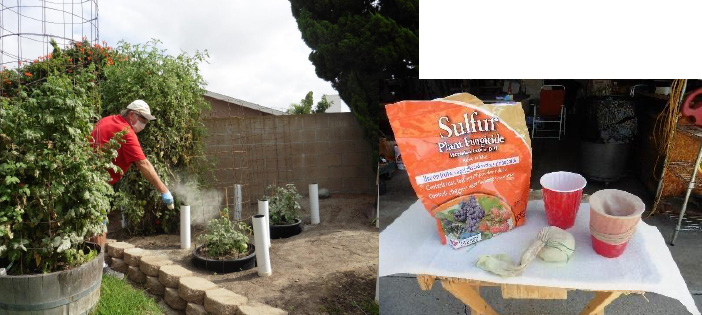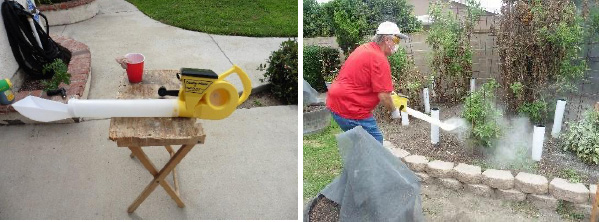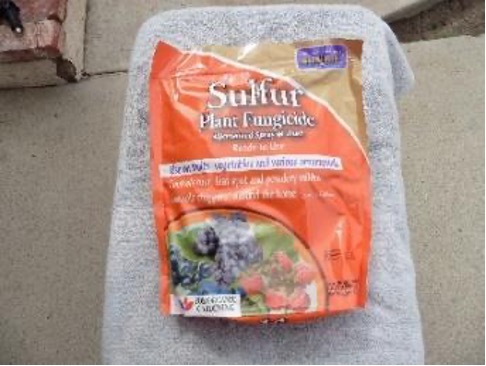Sulfur dust, an organic way to prevent pests and diseases on tomato plants
Sulfur dust prevents most types fungus, including powdery mildew, from spreading. Sulfur dust also prevents spider mites from infesting your tomatoes.
You must purchase sulfur dust, not sulfur powder. Sulfur powder is too coarse. Sulfur dust is very, very fine … exactly what you need. For tomatoes use it as a dust. Do not mix it with water and spray on — it’s too weak.
Once you see discolored leaves usually towards the bottom — beginning 2-3 weeks after planting — apply a light coating every week to 10 days right up to harvesting tomatoes. As new leaves and stems grow, they need a protective coating of sulfur dust. Sulfur kills the disease spreading powdery mildew spores. Prevents them from reproducing. Sulfur dust does not work on all plants. The dust burned my cucumber plant.
Spider mites always seem to come during warm weather. When you see little spider type webs on the tomato leaves you know you have them and they will kill the plant. Once you see spider mites and apply sulfur dust, it’s usually too late. Your plant is doomed. I experienced no spider mite activity on tomato plants having a light coating of sulfur dust.
Sulfur dust is used to prevent pests and diseases. It’s best not to wait until you have problems although even applying sulfur dust after experiencing powdery mildew stopped the spread of the disease.
How did I learn about using sulfur dust? A couple people in northern Spain were looking at pictures of tomatoes on my web site and told me the fungus problem and how to treat it. They told me Spain has been using sulfur dust for many many generations.
Rather than die from some sort of fungus, pests and diseases, tomato plants treated with sulfur dust now seem to die more of old age or my neglect. My experience shows sulfur dust prevents powdery mildew. The white leaves, the brown and yellow leaves are usually all forms of powdery mildew fungus. The fungus spreads and eventually dries up and kills the leaves. Once I began using sulfur dust–I experienced little or no problem.

Water in the mornings so that the plant and leaves have all day to dry and the water evaporate. Be careful of sprinklers coming on at night and the overspray/mist from them getting your leaves wet. Some varieties get powdery mildew more than others.
When planting, leave space between plants for better air circulation and keeping plants from touching each other and spreading the mildew. Mildew likes cooler, shady areas. Direct sunlight kills or slows down powdery mildew growth.

Look at the plants above. See the fungus? The 3 plants on the right have been treated with a light coating of sulfur dust on their leaves. The plant on the far left was never treated with sulfur dust. Notice down low on the 3 that have been treated —signs of fungus. These discolored leaves are signs of powdery mildew fungus … time for a light coating of sulfur dust.
There are 100’s of types of powdery mildew. Above are common looks of powdery mildew fungus.
Sulfur dust is organic; it comes from Mother Nature. It is not a man-made pesticide.
How to apply sulfur dust on tomatoes?
Always follow the manufacturer directions when applying. Directions say you can mix it in water and spray on or apply as a dust. For tomatoes, apply as a dust. You can use a duster which makes it easy for large areas or you can take and cut about a 12 inch section out of a woman’s nylon stocking. Tie one end, fill through other end with sulfur dust. Then tie that end and shake the dust onto tomato plants. Squeeze bottles are also available. If you apply too much, simply shake the leaves to get some off. If it rains or you water removing the sulfur dust, let the tomatoes dry and reapply.




Sulfur dust is organic, comes from Mother Nature but it’s a very fine dust so it’s best not to breath in, get in your eyes, etc.
You are welcome to share this information with others—family, friends and clubs, etc.
Sharing tips helps us be better growers.
Dave Freed / the Tomato Guy
🍅 Bumper Harvests Made Simple - Discover the secrets to cultivating tomato plants that yield over 100 lbs of fruit!
🔍 Expert Advice At Your Fingertips - Get straight-to-the-point guidance on tomato care, including:
- Pest Control: Keep your tomatoes safe from critters.
- Disease Prevention: Spot signs early and take action.
- Optimal Growth Tips: Watering, sunlight, soil, and more!